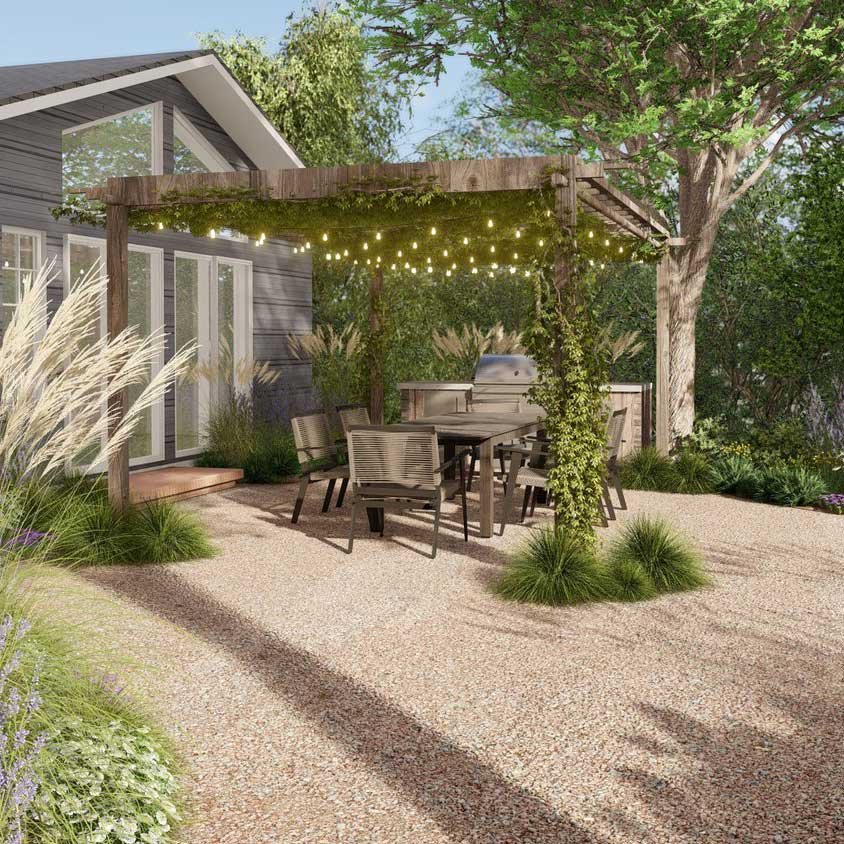3 Simple Techniques For Landscapers
3 Simple Techniques For Landscapers
Blog Article
How Landscapers can Save You Time, Stress, and Money.
Table of ContentsLandscapers Things To Know Before You BuyThe smart Trick of Landscapers That Nobody is DiscussingThe Ultimate Guide To LandscapersSome Of LandscapersThe 45-Second Trick For Landscapers
- A tree or shrub (shrub) that sheds its fallen leaves in winter. In the PNW there are semi-deciduous or semi-evergreen plants that might lose their leaves relying on how cool the wintertime is. Abelia and some hebe are excellent instances. Landscapers. - A level gathering room, made of timber or composite product (made to resemble timber), typically adjacent or attached to a framework.

- Granite that is weathered to the factor that it is a really fine aggregate. This is an all-natural procedure, and the result can be utilized for courses and patios. Broken down granite is usually referred to as DG. It is particularly valuable in contemporary landscapes. - Trick landscape attributes being proposed in a landscape style strategy.
Some Known Factual Statements About Landscapers
These goals guide the design procedure, not the developer's design or preferences. Common design purposes in Rose city are reduced maintenance, drought forgiving, and pet friendly. - Process for removing or thinning the dead reduced degree of a mature lawn. Thatch is yard that has actually died and gathered below the environment-friendly blades.
Over time this layer can get really thick and make it challenging for water, sun, and nutrients to obtain to portions of the lawn.- The process of collecting and managing the flow of water on a residential or commercial property. This can be finished with grading, French drains pipes, dry wells, absorptive surfaces, sump pump, rainfall gardens, and more.
Feature at the bottom of hillsides, with all-natural springtimes, or packed with hefty clay have the most drainage troubles.- A slow feeding watering system that utilizes versatile tubing and emitters to send a precise amount of water per plant. This is the most reliable method of watering plants. - The capacity of a plant to make it through without much summer season water.
- A garden feature where water is represented by an accumulated rock product, typically a gravel or granite.- A stone or flagstone outdoor patio, course, or sidewalk constructed without a concrete base.
Some Of Landscapers
- A stone preserving or complimentary standing wall constructed without the usage of mortar. An extremely competent mason is required for a completely dry stack rock wall. Most wall surfaces in Portland are not completely dry stacked, also if they seem. - A below ground framework that collect water and allows it to reduce percolate anonymous into the dirt around it.
Landscape design that works with a sites' atmosphere in both appearance and sustainability without unfavorable influences to the atmosphere. Bordering in the landscape is a line of demarcation that develops visual rate of interest in the garden by dividing one segment from one more sector. This can be aesthetic or functional, keeping one component (such as pea crushed rock) from obtaining mixed into one more (like bark dirt).
Areas can also have a feeling of "room" supplied by trees, various other growings, fencings, or displays. The landscape near the access to a structure.
A plant that is not indigenous to the area where it will certainly be grown. Not all "exotics" are intrusive or hazardous, and numerous can be well behaved or drought tolerant (Landscapers). A mass planting of ferns. Thicker bladed turf grass that spread via rhizomes.: The degree of dirt on your home before bark dust or compost is spread.
About Landscapers

The purpose, reason, or activity that a location is be landscaped for. Space for growing plants for watching, eating, or physical activity.
Rock item, either rounded or fractured, that is reasonably small- typically 1" or less. Low plants that are enabled or urged to top an area. Can refer to any kind of "tough" garden elements including statuary or stones yet most typically is made use of to describe courses, patios, and walls.: Height difference between the level of water in a pond (or the degree of the pump if it rests outside the fish pond) and the top electrical outlet of water which impacts performance of the water pump in gph (gallons per hour). Dense shrubs or trees that form a fence, screen, or limit.

The Best Strategy To Use For Landscapers
A more loosened up garden controlled by curved as opposed to straight bed lines and a less stiff framework. Conventional PNW landscapes are casual. A plant that spreads greater than desired, or into environments where it does damage. Rose city has a checklist of invasive plants that need to not be installed in landscapes due to the fact that they can infect forests or rivers and be difficult to manage.
Smart irrigation controller evaluations and referrals here. 2-D rendering of the recommended irrigation system. Can include head placements and insurance coverage, pipe sizing, GPM specs, and products required to mount this system. An irrigation plan is normally unneeded for properties yet is typical for commercial projects. Certified specialist that develops landscapes, educated in design and architecture in addition to in horticulture.
Landscape designers usually have less schooling than Landscape Architects and are not licensed. A finished landscape layout, describing all aspects for the new site web landscape.
Calcium material used to elevate the pH in dirt, which will make it less hospitable to moss. A water limited HDPE product utilized underneath fish ponds, streams and waterfalls in water attributes. Utilizing many growings of the very same range to complete an area in the landscape. This can decrease upkeep and water use in the yard.
Report this page